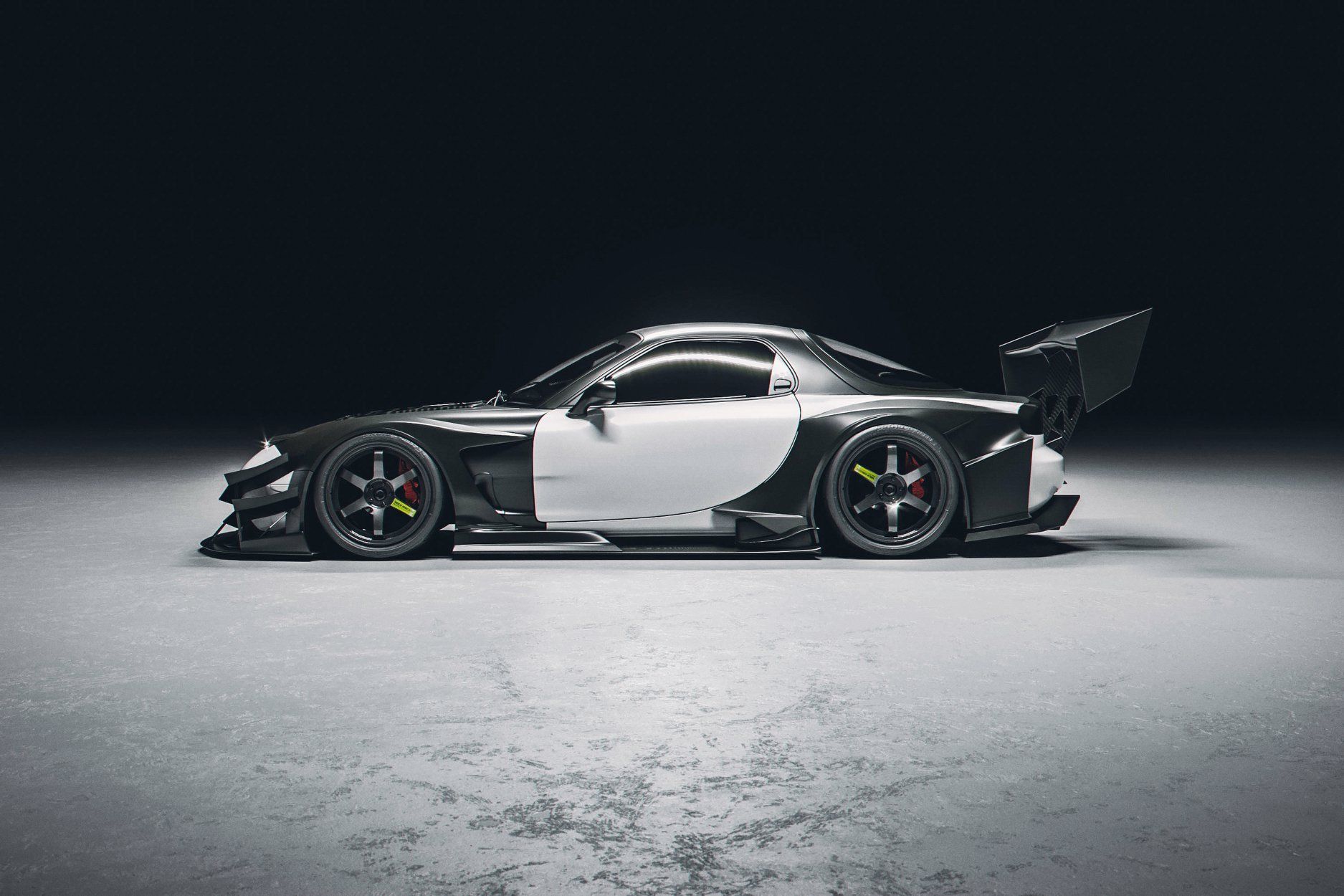When most people hear the words ‘Mazda’ and ‘RX-7,’ their minds instantly project the image of the third-generation FD model. And for good reason. This was the last chapter in the RX-7 saga, the best-looking of them all, and at that time, the ultimate interpretation of the Wankel rotary engine.
There’s no wonder that so many gearheads love the third-gen Mazda RX-7. It’s beautifully designed, lightweight, and it handles like a charm out on the open road. Plus, it makes for a mean donor vehicle for drift cars and as you’re about to see, for a time attack car, too.
Ever wondered what a time attack Mazda RX-7 would look like?
Believe it or not, it’s Japan that gave us time attacks. This form of racing appeared in the mid-1960s on race tracks such as the Tsukuba Circuit, and it still lives to this day. The cars were generally modified by tuners, who would start off from a road-going vehicle and work their way up to the final race car via a bucketload of aero elements and even full-carbon-fiber body kits.
Speaking of those improvements, check out Khyzyl Saleem’s Voltex-inspired Mazda RX-7 time attack kit. You might have heard of Khyzyl before, as he’s the self-taught concept artist and car designer behind the split-wing Polestar 1 currently on the cover of Need For Speed Heat. He also admins one of the hottest car-centric Instagram accounts you’ll ever stumble upon. Seriously, you have to follow him right now.
Coming back to his RX-7 time attack concept, it got the whole nine yards in terms of body mods, starting with the giant rear wing, continuing with the intricate side skirts, and ending with the stacks of aero blades and the conspicuous front splitter. There’s not an inch of this digital rendering that we don’t love.
As for what could lie under that hood, there are a lot of comments wishing for an LS swap, although we’ll go with the old-school twin-turbo, two-rotor rotary engine that churned out up to 255 horsepower. Because if Mazda’s sports cars thought us anything along the way, it’s that you don’t need tsunamis of horsepower to have fun.
Mazda RX-7 Specifications
|
Engine |
twin-turbocharged 1.3-liter Wankel |
|---|---|
|
Horsepower |
255 HP @ 6,000 RPM |
|
Torque |
217 LB-FT @ 5,000 RPM |
|
0-to-30 mph |
2.2 seconds |
|
0-to-60 mph |
5.1 seconds |
|
Quarter Mile |
13.8 at 100 MPH |
|
Top Speed |
160 MPH |

